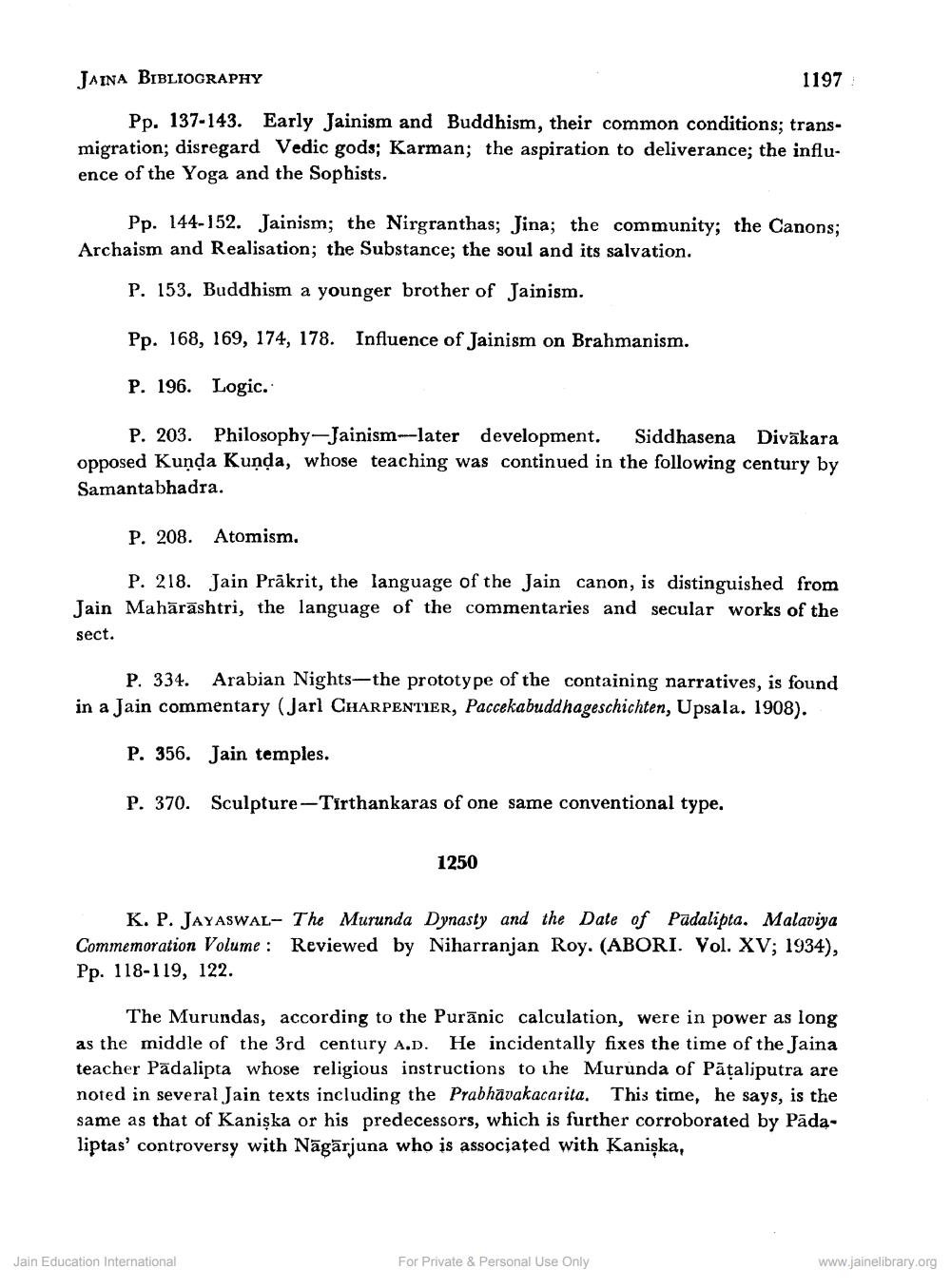________________
JAINA BIBLIOGRAPHY
1197
Pp. 137-143. Early Jainism and Buddhism, their common conditions; transmigration; disregard Vedic gods; Karman; the aspiration to deliverance; the influence of the Yoga and the Sophists.
Pp. 144-152. Jainism; the Nirgranthas; Jina; the community; the Canons; Archaism and Realisation; the Substance; the soul and its salvation.
P. 153. Buddhism a younger brother of Jainism.
Pp. 168, 169, 174, 178. Influence of Jainism on Brahmanism.
P. 196. Logic.
P. 203. Philosophy- Jainism--later development. Siddhasena Divākara opposed Kunda Kunda, whose teaching was continued in the following century by Samantabhadra.
P. 208. Atomism,
P. 218. Jain Prākrit, the language of the Jain canon, is distinguished from Jain Mahārāshtri, the language of the commentaries and secular works of the sect.
P. 334. Arabian Nights-the prototype of the containing narratives, is found in a Jain commentary (Jarl CHARPENTIER, Paccekabuddhageschichten, Upsala. 1908).
P. 356. Jain temples.
P. 370. Sculpture-Tirthankaras of one same conventional type.
1250
K. P. JAYASWAL- The Murunda Dynasty and the Dale of Padalipta. Malaviya Commemoration Volume : Reviewed by Niharranjan Roy. (ABORI. Vol. XV; 1934), Pp. 118-119, 122.
The Murundas, according to the Purānic calculation, were in power as long as the middle of the 3rd century A.D. He incidentally fixes the time of the Jaina teacher Padalipta whose religious instructions to the Murunda of Pāțaliputra are noted in several Jain texts including the Prabhāvakacarita. This time, he says, is the same as that of Kaniska or his predecessors, which is further corroborated by Padaliptas' controversy with Nāgārjuna who is associated with Kaniska,
Jain Education International
For Private & Personal Use Only
www.jainelibrary.org




